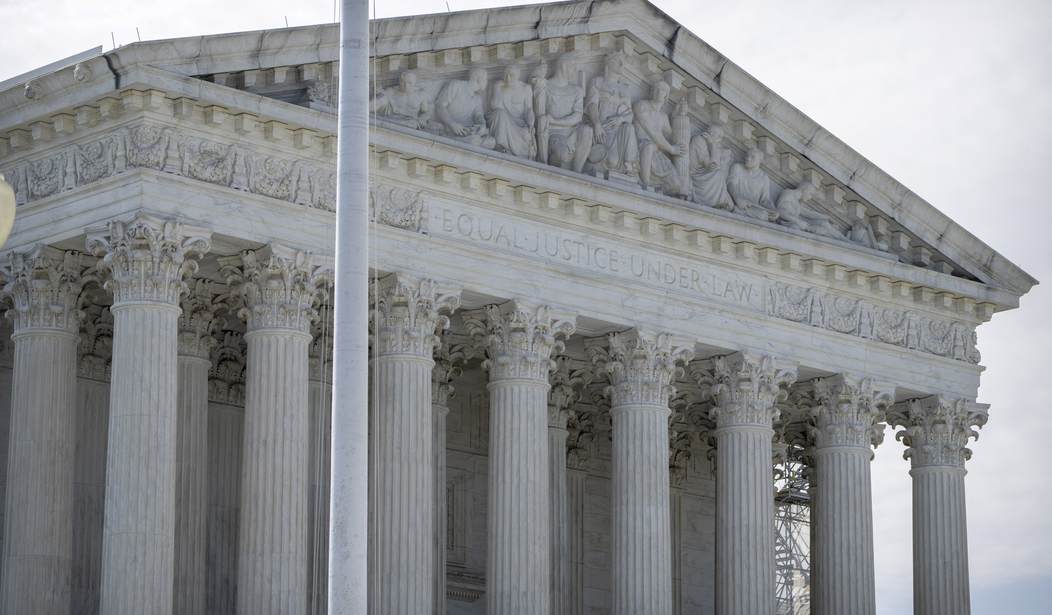While so-called ghost guns get a lot of hype in the media, the reality is that they account for only a tiny fraction of those firearms used in illegal acts. However, because they've grown in supposed popularity--probably because of media hysterics cluing bad guys in that these are a thing--they're the worst thing ever.
When the Biden administration took steps to try to regulate these firearms, the usual suspects in the media and anti-gun activism celebrated it.
However, such a decree was never going to go unchallenged. Today, opening arguments begin in that case. (Arguments begin at 11:00 AM Eastern; you can watch them here.)
Among those party to the challenge is the Second Amendment Foundation, which sent a press release about today's opening statements.
On Tuesday, Oct. 8, the U.S. Supreme Court will hear oral arguments in Second Amendment Foundation’s (SAF) challenge to ATF’s regulation expanding what constitutes a “firearm.”
Arguments will begin at 11 a.m. EST and will be broadcast live here.
SAF is joined in the case by Defense Distributed and Not an LLC (doing business as JSD Supply). SAF and its partners are represented by attorneys Charles R. Flores and Josh Blackman of Houston, and SAF Executive Director Adam Kraut.
In April 2022, the Bureau of Alcohol, Tobacco, Firearms and Explosives (ATF) published its Final Rule amending the regulatory definition of the term “firearm” to encompass precursor parts that, with enough additional manufacturing operations, would become functional firearms frames and receivers, but in their current state were non-functional objects.
In seeking to regulate these “non-firearm objects” the ATF’s Final Rule directly contradicted Congress’ definition of “firearm” set forth in the Gun Control Act of 1968. The ATF’s re-definition of “firearm” in the Final Rule establishes a practical ban on the private manufacture of firearms – a constitutionally protected tradition.
In December 2022, SAF filed to intervene in an existing lawsuit in the Northern District of Texas known as VanDerStok v. Garland. The case challenges the lawfulness of ATF's regulatory re-definition of a "firearm" under the Administrative Procedures Act. SAF scored a major victory in the Fifth Circuit Court of Appeals, which vacated significant portions of the Rule. The Biden Department of Justice now seeks to resurrect the rule before the Supreme Court.
For more information about the case, visit saf.org. To listen to the arguments live, click here or follow SAF’s X page for live updates.
The key takeaway is that the argument will be that the ATF exceeded it's regulatory authority by trying to redefine what is and isn't a firearm. This is what the ATF did with bump stocks when they opted to redefine them as machine guns. The Supreme Court ruled they had no such authority, so it's unlikely this will be any different.
That's bad news for the anti-gun side because the reason Biden went the executive order route and had the ATF act unilaterally was because there wasn't a snowball's chance in Hades that Congress was going to pass any bill trying to accomplish what the ATF tried.
Yet that's not a valid reason to try and go around Congress like this and redefine things differently than Congress did.
Had there never been a law that specifically defined a firearm, they might could have gotten away with it. One could argue that the lack of definition would put the onus for defining what is and isn't a gun on the ATF. The problem is that they did define it. The ATF has to work within that definition, not make up their own because they really don't like that people do things they don't approve of.
The Vanderstock case is likely to be another smackdown of the ATF's overreach, much like what we saw in Cargill.








Join the conversation as a VIP Member